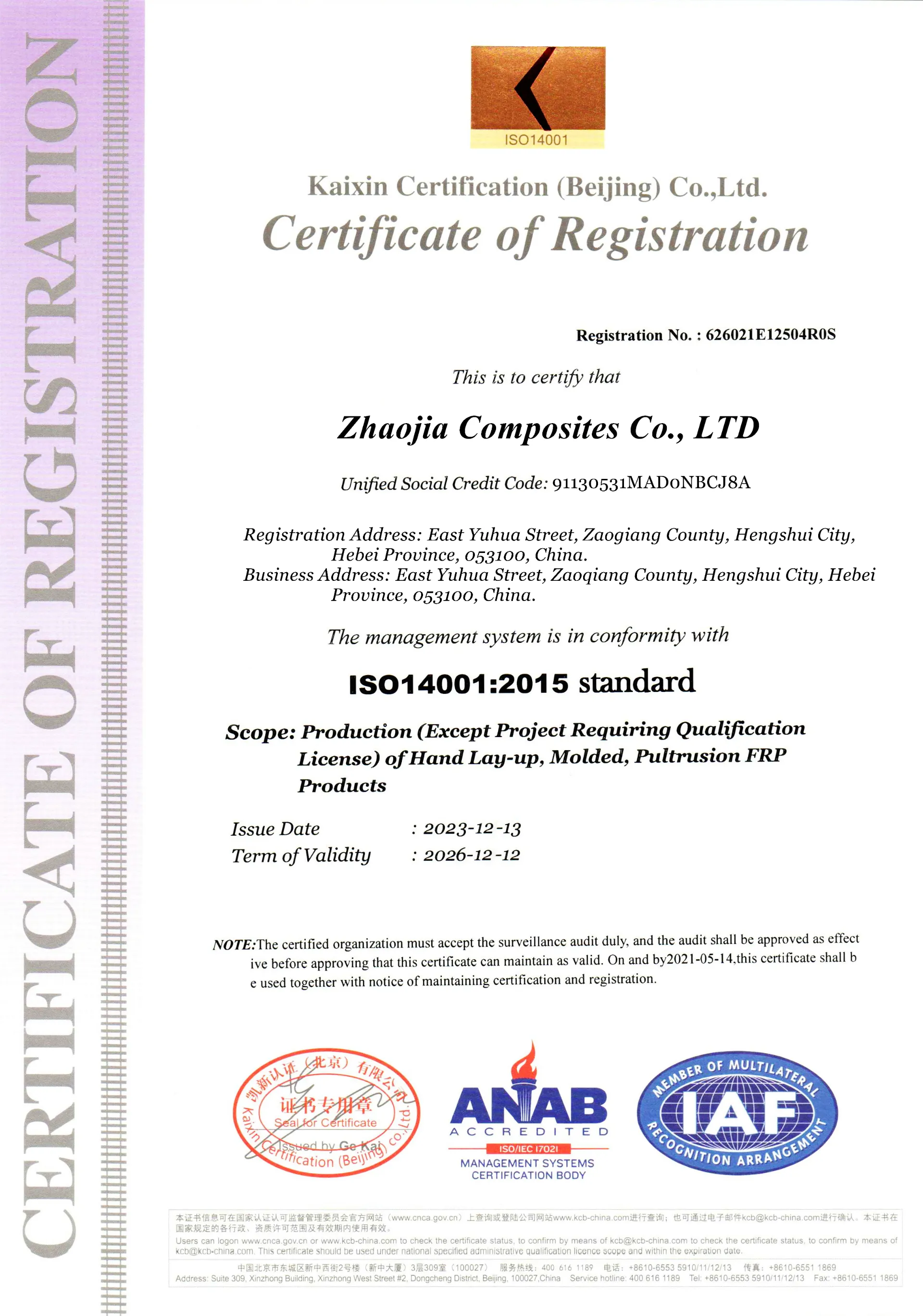loading...
- No. 9, Xingyuan South Street, Dongwaihuan Road, Zaoqiang County, Hengshui, Hebei, China
- admin@zjcomposites.com
- +86 15097380338
- Welcome to visit our website!
water treatment equipment
Water Treatment Equipment Ensuring Safe and Clean Water
Water is an essential resource for all forms of life on Earth. As the global population continues to rise and industrial activities expand, the demand for clean and safe water becomes increasingly critical. To address this necessity, water treatment equipment plays a vital role in purifying water and making it safe for consumption, agriculture, and industrial use.
The Importance of Water Treatment
Water often contains various impurities, including bacteria, viruses, chemicals, and heavy metals. These contaminants can pose significant health risks to humans and the environment. Hence, effective water treatment is crucial. The process typically involves several stages coagulation, sedimentation, filtration, disinfection, and sometimes advanced treatments like reverse osmosis or ultraviolet (UV) purification.
Common Types of Water Treatment Equipment
1. Coagulators and Flocculators Coagulation is the first step in the treatment process. Coagulants, such as aluminum sulfate, are added to the water to aid in the clumping together of suspended particles. Flocculation follows, involving gentle mixing to form larger aggregates called flocs, which can be easily removed.
2. Sedimentation Tanks After coagulation and flocculation, the water flows into sedimentation tanks, where the heavier floc particles settle at the bottom due to gravity. This sedimentation process effectively removes a significant portion of impurities before further treatment.
3. Filtration Systems Filtration is another critical step in purifying water. Various filtration methods include sand filters, activated carbon filters, and membrane filters. Each type caters to specific contaminants. For example, activated carbon filters excel at removing chlorine, volatile organic compounds, and unpleasant odors, while membrane filters can eliminate microscopic particles, bacteria, and even viruses.
water treatment equipment

4. Disinfection Units Once filtration is complete, disinfection is essential to eliminate any remaining pathogens. Common disinfection methods include chlorination, ozonation, and UV treatment. Chlorination is widely used due to its effectiveness and residual protection; however, it can create harmful by-products. UV disinfection, on the other hand, uses ultraviolet light to inactivate bacteria and viruses without introducing chemicals into the water.
5. Reverse Osmosis Systems For applications requiring ultra-pure water, such as pharmaceuticals or electronics manufacturing, reverse osmosis systems are employed. This technology uses a semi-permeable membrane to remove a vast range of contaminants, including salts, heavy metals, and other dissolved solids.
Advancements in Water Treatment Technology
The field of water treatment is constantly evolving, driven by technological advancements and a growing awareness of environmental sustainability. Innovations such as smart sensors and automated systems help monitor water quality in real-time, ensuring the efficiency of treatment processes. Moreover, there is an increasing focus on energy-efficient technologies and the development of sustainable materials for water treatment equipment.
Challenges and Future Perspectives
Despite advancements, the industry faces several challenges, including funding for infrastructure upgrades, regulatory compliance, and the need for skilled personnel. Furthermore, climate change impacts water availability and quality, necessitating adaptable solutions.
As the global community continues to confront water scarcity and contamination, investing in effective water treatment equipment will be paramount. By harnessing new technologies and improving existing methods, we can ensure that all populations have access to safe and clean water. This not only promotes health and well-being but also supports sustainable development and environmental conservation.
In conclusion, water treatment equipment is fundamental in safeguarding our most precious resource. Its role in purifying water plays a significant part in public health, agricultural productivity, and industrial processes, making it an essential area of ongoing research and investment.
-
The Rise of FRP Profiles: Strong, Lightweight, and Built to LastNewsJul.14,2025
-
SMC Panel Tanks: A Modern Water Storage Solution for All EnvironmentsNewsJul.14,2025
-
GRP Grating: A Modern Solution for Safe and Durable Access SystemsNewsJul.14,2025
-
Galvanized Steel Water Tanks: Durable, Reliable, and Ready for UseNewsJul.14,2025
-
FRP Mini Mesh Grating: The Safer, Smarter Flooring SolutionNewsJul.14,2025
-
Exploring FRP Vessels: Durable Solutions for Modern Fluid HandlingNewsJul.14,2025
-
GRP Structures: The Future of Lightweight, High-Performance EngineeringNewsJun.20,2025
